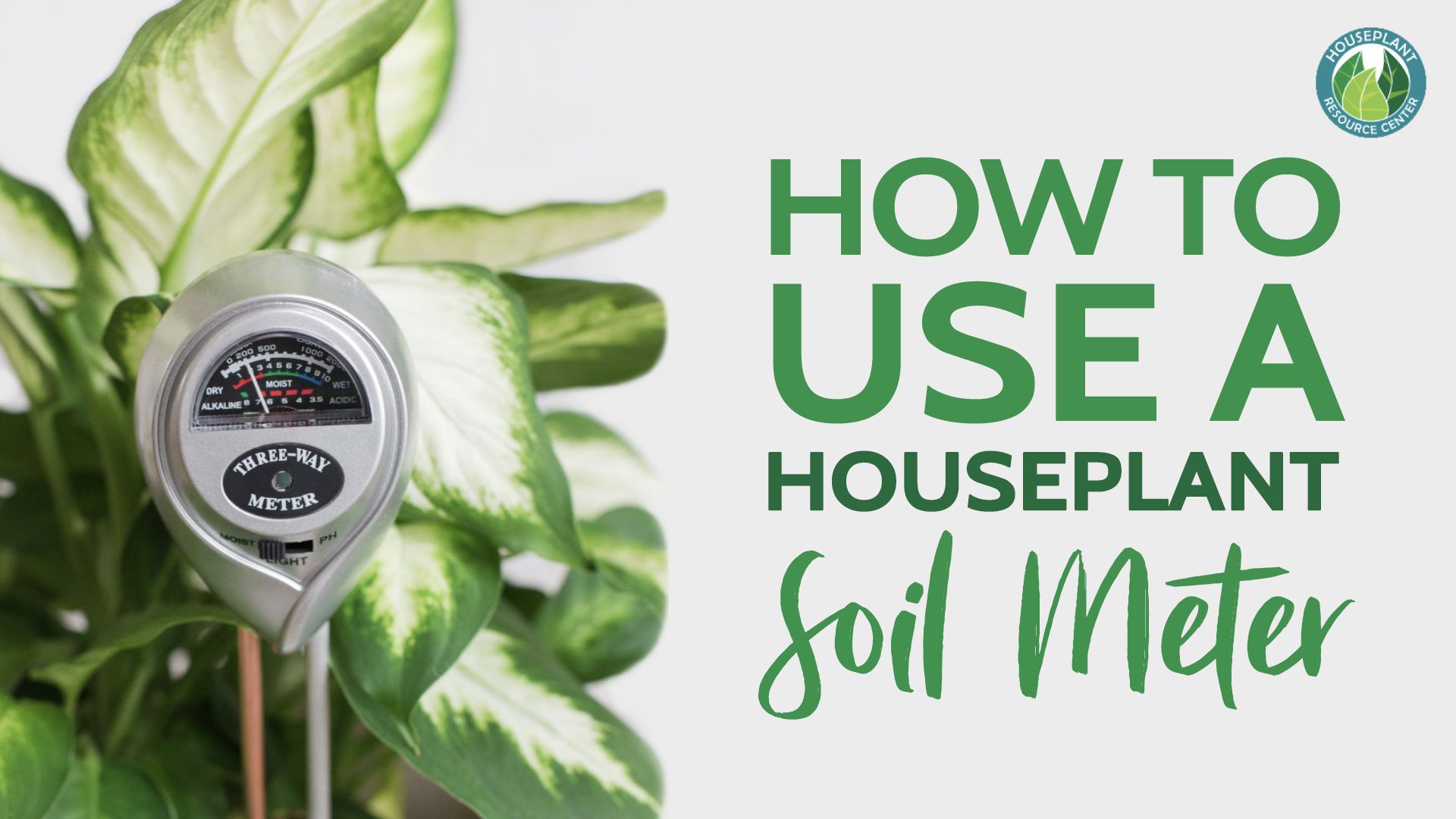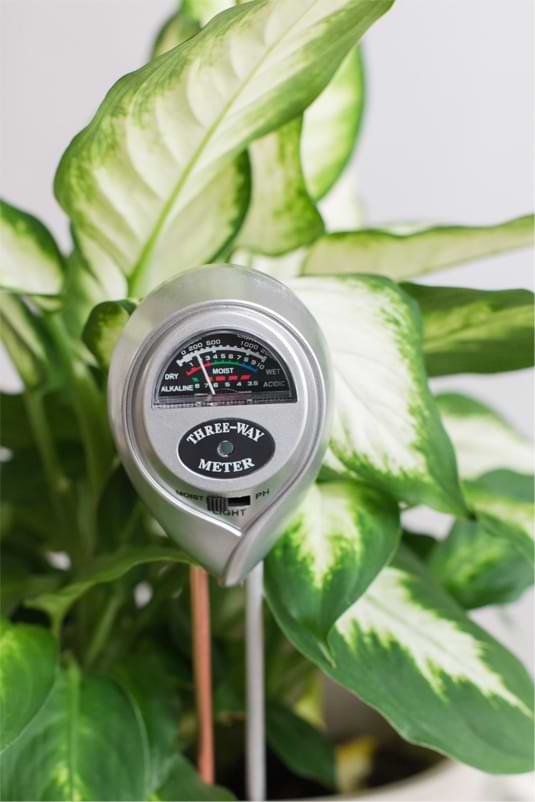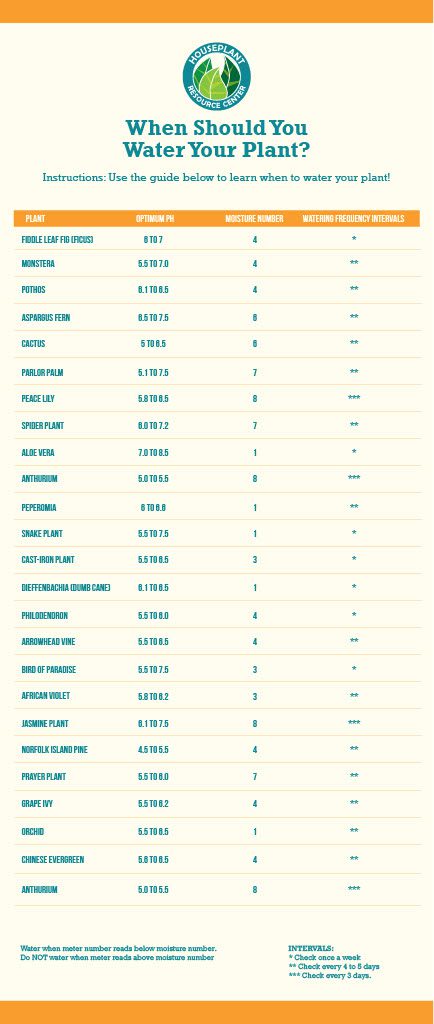Ever wondered how to use a soil meter to determine when to water your houseplants? We’ll walk you through it!
One of the best ways to ensure that your houseplants are getting the right amount of water (and on the right schedule) is to use a soil meter to test the moisture level of the soil.
There are lots of different methods for testing the moisture level in a plant’s soil, but we love moisture meters. Here’s why!
Table of Contents
Why use a soil meter?
A soil meter is the most accurate way to measure the moisture level in your plant’s soil, especially inside the root ball.
There are lots of different methods for determining whether houseplants are ready to be watered.
Some houseplant owners water on a strict schedule, but this doesn’t take into account the plant’s actual water needs or environmental factors that may affect the rate at which plants use water. These factors, including temperature, light, and humidity, can vary throughout the year, so watering on a schedule doesn’t always work.
Another common method is the finger test or poking your finger into the soil to test the moisture of the soil by feel. This method can work well, but it tells you nothing about what’s going on in the root ball.
Many other houseplant owners use the poke a stick method, in which a wooden stick like a chopstick or dowel is inserted into the soil. If it comes out wet with clumps of dark soil, the soil is on the moist side. If it comes out dry, the soil is dry. This method gives you more information than the finger test but is still imprecise.
The good thing about a soil meter is that you can test the moisture level of the root ball in a precise way so you know exactly when to water. It’s also helpful to monitor the soil after watering so you can see how quickly the soil drains and dries, which can be helpful for dialing in your plant’s care routine.
Where to buy a soil meter
You can find soil meters at any garden store and online. This is the one we recommend because it measures soil moisture and pH as well as light. Super useful!
How to Use a Soil Meter on Your Houseplants
Watch this video for a demonstration!
Step 1: Choose where to take your reading.
This is important because you can get different readings depending on where you insert the meter. The best place to take your reading is near the center of the root ball. Insert the sensor about halfway between the base of the plant and the edge of the pot, and about halfway down into the pot.
Step 2: Take your reading.
Read the instructions that come with your meter to determine how long to leave the sensor in the soil. Most meters will give you a reading when the appropriate amount of time has passed. This will be a number between 1 and 10, with one being completely dry and 10 being absolutely soaked.
So what do you do with this information?
Different plants have different watering preferences. It’s important to research your plant’s needs to know what to do with the information your meter gives you. (Make sure to read the symbols on your plant’s information tag to get an idea of how much water it needs.)
In general, plants that prefer drier conditions like succulents, snake plants, etc. will need to be watered at a 1 or 2.
Plants with medium water preferences and that like slightly damp soil like fiddle leaf figs and monsteras will need to be watered when the meter reads 3 or 4.
Moisture-loving plants that need constantly moist soil, such as the maidenhair fern, will need to be watered around a 5 or 6 or possibly even higher.
Step 3: Remove the meter
This step is super important because leaving your meter in the soil constantly will damage the sensor and cause the meter to malfunction or not function at all!
When you’re done using the meter, remove it from the soil, wipe off the sensor, and put it away in a safe place until its next use.
A soil meter will help you give your plants the exact amount of water they need so they can stay healthy. Once you start using a soil meter, you’ll never want to go back to testing soil with your finger or a stick!
Houseplant Resource Center Soil Meter Review
For more information about our 3-1 Soil Meter, be sure to read a review of our product from The Yard and Garden.
After testing our 3-1 Soil Meter, they concluded:
The Houseplant Resource Center’s 3-in1 soil test kit is one of the easiest kits to use on our list. This analog design means no batteries are required, just push the probes into the soil, wait 10 seconds, and take the reading.
Moisture Meter Chart
Different houseplants require different levels of moisture in the soil. Download this free Moisture Meter Chart and learn how to confidently water all of your houseplants.
Essentials:
- Make sure you’re giving your plants the right nutrients! Our Indoor Plant Food works perfectly for almost all indoor plants, and it’s easy to use. Grab it here!
- Use our premium well-draining potting soil for your houseplant.
- Protect your houseplant from insects, bacteria, and fungus with our Houseplant Leaf Armor. (As an added bonus, the Leaf Armor also cleans and adds shine to your houseplant’s leaves!)
- Use a moisture meter like this one to always know how thirsty your plant is.
- Click here to shop live plants!
To learn more:
- Join us for our free Top Secrets From Fiddle Leaf Fig Growers Webinar or enroll in our free Advanced Fiddle Leaf Fig Care Course.
- Read The Fiddle Leaf Fig Expert, your complete guide to growing healthy fiddle leaf fig plants. The book is available in full-color paperback or Kindle edition on Amazon now!
- Click to join our community on Facebook: Houseplant Resource Group.






